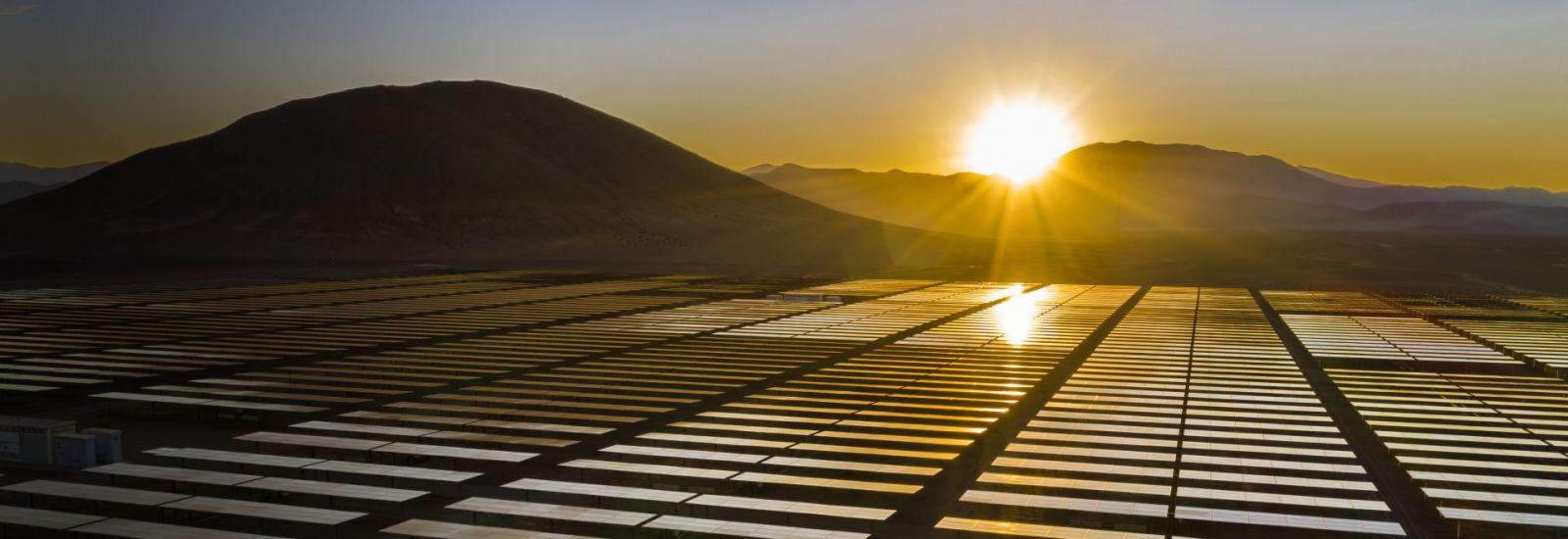Solar, or photovoltaic (PV), cells, are expected to play a critical role in transforming the global energy grid toward renewables. However, over the past decades the main challenge for solar energy was optimizing solar cell efficiency, or how much of the sun’s energy could be harnessed with solar panels. From the 1950s, solar cell efficiency lingered around 8-14%; it climbed to 20% by the mid-1980s. Today’s standard silicon crystalline solar cells, while relatively cheap to manufacture, convert, on average, only 15-23% of the sun’s energy into usable electricity.
Looking to new materials for efficiency gains
To harness more of the sun’s higher-energy photons, researchers have tested different semiconductor materials, such as gallium arsenide and gallium phosphide, to achieve efficiencies higher than silicon-based cells. In this research, several layers of different semiconductor materials were stacked on top of each other in order to absorb and convert a broader spectrum of solar energy with each layer, with each step. . The current world record for the most efficient generation of energy by a solar cell uses a stack of six different photoactive layers to reach nearly 50% efficiency in the lab and nearly 40% in real-life conditions.
“Until now, such layered solar cells, with theoretical efficiencies of more than 50% were expensive to manufacture, limiting their use to applications such as satellites, where costs are less important than weight and efficiency,” adds Sanjay Palanivel, VAT PV Product Manager.
Step cell designs provide a boost
"Step cells" are manufactured by layering, for example, a gallium arsenide phosphide-based solar cell on top of a conventional silicon solar cell. This design opens up the possibility of producing solar cells with higher efficiency at production costs comparable to those of traditional silicon solar cells.
A typical automated solar cell production line integrates all production steps, from substrate pretreatment, thin film coating steps, final assembly (contacts, encapsulation and testing) to quality control. The production of high-performance solar cells follows the same steps, only with higher demands on the quality of the individual processing steps. Stable process sequences under always the same conditions are even more decisive here. For all system components, this means performance within very narrow tolerance limits and ideally with the ability to compensate for certain process fluctuations.
Key production component
Transfer valves as connections between individual process chambers and steps in solar cell manufacturing are therefore essential system components that have an influence on manufacturing quality and efficiency.
Transfer valves, through their operation, can have an impact on particle entrainment as well as particle activation in processes. This can have a negative impact on the manufacturing quality of the cells. Furthermore, thermal deformation of large process chambers, as is common in solar cell manufacturing, at the interfaces to large transfer valves can lead to variable sealing quality. Likewise, this can be caused by undesirable condensation effects.
With the latest generation of large transfer valves, e.g. the 07.7 series or the 06.8 series with FlapVAT technology, VAT offers manufacturers comprehensive solutions here.
With its optimized single-motion design, the 06.8 offers simplified opening and closing motion for exceptionally fast cycle times of 1.2 - 2 s, depending on the opening size. This makes the 06.8 the fastest large transfer valve in its class while providing minimal particle activation and adaptive sealing performance.
"Since the success of the new high-performance solar cells will be measured primarily by 'price per watt', manufacturers need to maintain the right balance between high efficiency cell technology and cost-oriented manufacturing," explains Sanjay Palanivel. "The latest generation of VAT transfer valves helps manufacturers achieve this. The 'cost of ownership' (CoO) consideration is becoming more and more decisive. In addition to investment costs, high precision and reliability, fast cycle times and low maintenance are the criteria that determine an optimal CoO."
